I thought it appropriate, if I used my Motion Picture and Television Blog to give my readers a "Hollywood History Lesson" on the "Revolutionary War". A war against the tyranny and dictatorship of "King George III". A war fought to create a DEMOCRACY with ELECTED REPRESENTATIVES by the people, for the people, and WITHOUT A KING!
The following is a partial list of Motion Pictures and Television programs. Each about the "Revolutionary War" and some, also, about the creation of the "Declaration of Independence". All envisioned by America's film makers.
There were four films using the "Revolutionary War" as a backdrop during the silent era. Both the first such motion picture produced and the fourth were made by the same director David Wark (D.W.) Griffith.
My look at the more controversial Griffith: "D.W. GRIFFITH: 'The Birth of a Nation' (1915) and 'Abraham Lincoln' (1930): The Odyssey of a Kentucky Born Motion Picture Innovator" can be read at:
http://www.bewaretheblog.com/2019/12/dw-griffth-birth-of-nation-1915-and.html
1776, or THE HESSIAN RENEGADES released September 6, 1909
The following press release describes this 10 minute long "Historical Film" by D.W. Griffith.

On February 21, 1924, Griffith released his two hour and twenty-one minute epic "AMERICA".

The story shifts back and forth between the British encampments in Northern New York to the Colonial Patriots in both Massachusetts and Virginia. While involving his two leading character families with actual events of the war. A pattern that would be used in most films about the "American Revolution" going forward.


Above left, are Neil Hamilton as "Nathan Holden" and Carol Dempster as his love "Miss Nancy Montaque". Above right is Harry O'Neill as "Paul Revere" on his famous ride. Neil Hamilton from 1966 through 1968 would portray "Commissioner Gordon" on television's "Batman". While Dempster left the movie business in 1926 and O'Neill made only this motion picture.
Portraying the real life and cruel British Officer, "Captain Walter Butler", was Lionel Barrymore. Lionel was the older brother of actors Ethel and John Barrymore and would win the Best Actor Oscar for 1931's "A Free Soul". He portrayed "Prince Dakar" aka: "Captain Nemo" in the hybrid MGM part silent-part talkie 1929 "The Mysterious Island", but is best known for portraying the villainous "Mr. Potter" in Frank Capra's 1946 "It's A Wonderful Life" and "Dr. Gillespie" in nine of the MGM "Dr. Kildare" movie series.

One of the major sequences that Griffith recreates is an attack by "Captain Butler" with his Iroquois Native American allies. The Iroquois are killing men, women and children as "Butler's" artillery reigns shells on the Colonial defenders. A sequence also recreated previously in another movie I will mention next.
In two of the other Historical sequences. The audience sees "Nathan"
visit "General George Washington", played by Arthur Dewey,
at Valley Forge and become involved with those events. While "Nancy"
and her father visit relatives in the Mohawk Valley of New York and become
involved with the British and Iroquois attacks there.
The First World War came into play with the actual second silent movie made about the Revolutionary War.
THE SPIRIT OF '76 premiered in Chicago in May of 1917

The plot has a romance between a Quaker girl, who is really half Native American, named "Catherine Montour", played by Adda Gleason, and "King George III", played by Jack Gosgrove.

Above Adda Gleason is on the far left. Her character of "Catherine Montour" was a specific name choice by writer and producer Robert Goldstein. The real "Catherine" was known as "Queen Catherine" and was a prominent leader of the Iroquois and Seneca's during the Revolutionary War.
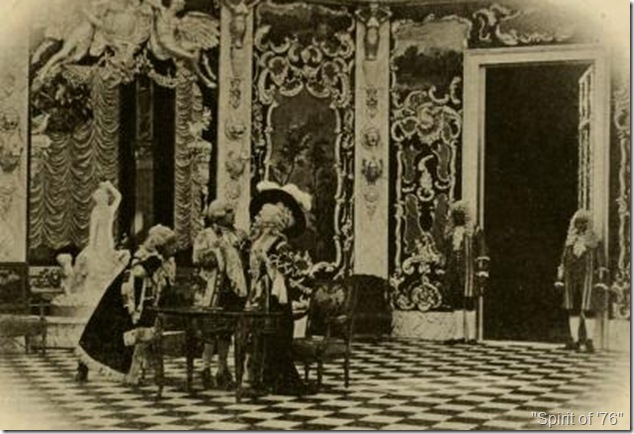
In this plot, instead of marrying "Catherine Montour", the King marries a German. The American Revolution begins and "Catherine" sees a chance to avenge her perceived treatment by the King for destroying her dream of becoming the "First Queen of America". She goes to the Colonies and becomes the leader of a confederation of Native American tribes. One of her aides will turn out to be her own brother, but this isn't discovered until the films end. So far no controversy, but the United States Government had problems with some of the sequences.

Above the marker honoring the real Catherine Montour.
Robert Goldstein recreated in great detail "The Battle of Wyoming" aka: "The Wyoming Massacre". That took place in the Wyoming Valley of Pennsylvania on July 3, 1778. The British and Iroquois attacked Colonists and an estimated 300 were killed. Between 30 to 40 Colonists escaped and were hunted down by the Iroquois and then surrendered to the Native Americans. After that surrender they were ritually tortured to death.
Goldstein also recreated the "Cherry Valley Massacre". Which took place in Cherry Valley, New York, on November 11, 1778. Again British Troops and Iroquois' attacked Colonial Settlers. That overall command was by the aforementioned, "Captain Walter Butler", and as seen in D.W. Griffith's "America". The massacre included the murder of women and children.
The picture also contained nonfactual sequences claimed to be true. Such as a physical attack on "Benjamin Franklin", played by Ben Lewis, by "King George III" and a sexual relationship between the King and Catherine.

The plot has a romance between a Quaker girl, who is really half Native American, named "Catherine Montour", played by Adda Gleason, and "King George III", played by Jack Gosgrove.

Above Adda Gleason is on the far left. Her character of "Catherine Montour" was a specific name choice by writer and producer Robert Goldstein. The real "Catherine" was known as "Queen Catherine" and was a prominent leader of the Iroquois and Seneca's during the Revolutionary War.

In this plot, instead of marrying "Catherine Montour", the King marries a German. The American Revolution begins and "Catherine" sees a chance to avenge her perceived treatment by the King for destroying her dream of becoming the "First Queen of America". She goes to the Colonies and becomes the leader of a confederation of Native American tribes. One of her aides will turn out to be her own brother, but this isn't discovered until the films end. So far no controversy, but the United States Government had problems with some of the sequences.

Above the marker honoring the real Catherine Montour.
Robert Goldstein recreated in great detail "The Battle of Wyoming" aka: "The Wyoming Massacre". That took place in the Wyoming Valley of Pennsylvania on July 3, 1778. The British and Iroquois attacked Colonists and an estimated 300 were killed. Between 30 to 40 Colonists escaped and were hunted down by the Iroquois and then surrendered to the Native Americans. After that surrender they were ritually tortured to death.
Goldstein also recreated the "Cherry Valley Massacre". Which took place in Cherry Valley, New York, on November 11, 1778. Again British Troops and Iroquois' attacked Colonial Settlers. That overall command was by the aforementioned, "Captain Walter Butler", and as seen in D.W. Griffith's "America". The massacre included the murder of women and children.
The picture also contained nonfactual sequences claimed to be true. Such as a physical attack on "Benjamin Franklin", played by Ben Lewis, by "King George III" and a sexual relationship between the King and Catherine.
The problem for Goldstein was that the United
States had just entered the First World War one month prior to the picture's Chicago
opening. The U.S. Government objected to the portrayal of our ally England in
the film. Even though such objections didn't exist after the war ended with Griffith's "America".
To placate Washington, D.C., Robert Goldstein agreed to remove certain scenes and the picture resumed playing in Chicago. However, the picture opened in Los Angeles with those scenes still in it.
An investigation took place into Goldstein's motivations for making this story. Along with his portrayal of British Soldiers and the historical fact that King George is shown married to a German women in it.
The decision against Robert Goldstein was:
To placate Washington, D.C., Robert Goldstein agreed to remove certain scenes and the picture resumed playing in Chicago. However, the picture opened in Los Angeles with those scenes still in it.
An investigation took place into Goldstein's motivations for making this story. Along with his portrayal of British Soldiers and the historical fact that King George is shown married to a German women in it.
The decision against Robert Goldstein was:
----aiding and abetting the German enemy!
Goldstein was charged with violating the "Espionage Act". He
was convicted on charges of attempted incitement to riot and to cause
insubordination, disloyalty, and mutiny of soldiers then in uniform. As well as prospective military recruits. Robert Goldstein was sentenced to 10 years in prison. His sentence was commuted to 3
years by President Wilson.In 1954 the conviction was overturned.
SONS OF LIBERTY released May 20, 1939
This was a 20 minute short subject from Warner Brothers about "Haym Salomon", played by Claude Rains. "Salomon" immigrated to New York from Poland at the start of the "Revolutionary War" and became the Financial Banker for the American's. It was "Salomon" that exchanged French and other country currencies. So that the money could flow to the "Sons of Liberty" and the revolution. The short won the Oscar for Best Short Subject.

Returning to New York's Mohawk Valley was director John Ford's:SONS OF LIBERTY released May 20, 1939
This was a 20 minute short subject from Warner Brothers about "Haym Salomon", played by Claude Rains. "Salomon" immigrated to New York from Poland at the start of the "Revolutionary War" and became the Financial Banker for the American's. It was "Salomon" that exchanged French and other country currencies. So that the money could flow to the "Sons of Liberty" and the revolution. The short won the Oscar for Best Short Subject.

DRUMS ALONG THE MOHAWK released November 10, 1939

The picture was based upon a 1936 Historical novel by Walter D. Edmonds. Although the head of 20th Century Fox, Daryl F. Zanuck, gets producer credit. In reality associate producer Raymond Griffith, no relation to D.W., made the motion picture. John Ford had two other films released before this one in 1939, "Stagecoach" and "Young Mr. Lincoln".
Claudette Colbert portrayed "Magdalena 'Lana' Borst Martin". Colbert had portrayed "Empress Poppaea", wife of "Nero", and shocked audiences being entirely nude in a milk bath scene in Cecil B. DeMille's 1932 "The Sign of the Cross" and had the title role of "Cleopatra" in DeMille's 1934 feature. That same year she starred in the original version of authoress Fannie Hurst's "Imitation to Life".
Henry Fonda portrayed "Gilbert 'Gil' Martin". Fonda had just starred in John Ford's "Young Abraham Lincoln" and would immediately follow this picture with Ford's 1940 version of the John Steinbeck novel "The Grapes of Wrath".
The basic story could have been part of D.W. Griffith's "America". As wealthy "Lana" marries "Gil" and the two move to the town of Deerfield, in the Mohawk Valley. There the couple and other settlers have to deal with British soldiers, a Tory loyalist to the King George III, "Caldwell", played by John Carradine, and the events of the Revolutionary War. The screenplay follows the two through the entire War with "Lana" losing their first baby and then the birth of three others as the war unfolds.

Above the perfectly underplayed and evil John Carradine.



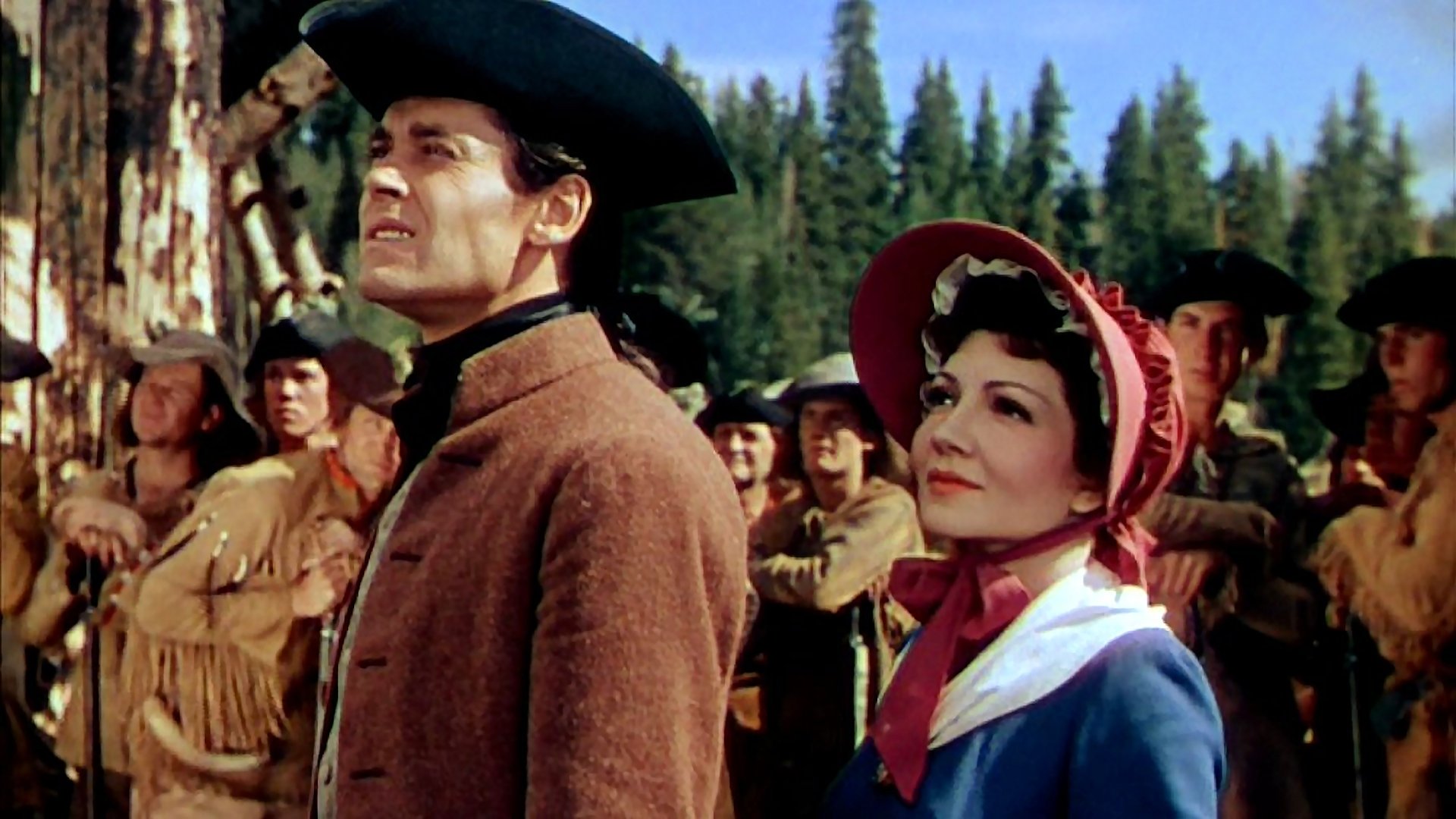

The first biographical motion picture of one of the "Founding Fathers" and the subject of a current popular Broadway Musical was:
ALEXANDER HAMILTON released September 12, 1931

Back in 1917, the motion picture's sta,r George Arliss, wrote, produced and starred in the play of the same name the picture was based upon. The story follows Hamilton's efforts to pass the "Assumption Bill (Funding Act of 1790)" and his compromising to pass the "Residence Act". That second act was to establish a permanent seat of Government along the Potomac River.

Above Doris Kenyon as "Mrs. Betsy Hamilton" and George Arliss as "Alexander Hamilton".

Above George Arliss and Alan Mowbray as "General George Washington". Below Kenyon, Arliss and Montagu Love as "Thomas Jefferson".

THE HOWARDS OF VIRGINIA released September 19, 1940

This feature film starred Gary Grant as "Matt Howard" and Martha Scott as "Jane Peyton
Howard". The film was based upon the 1939 novel "Tree of Liberty" by Elizabeth Page and followed the "Peyton" and "Howard" families throughout the entire war.

Above Cary Grant as "Matt Howard", Sir Cedric Hardwicke as "Fleetwood Peyton" and Martha Scott as "Jane Peyton Howard". Below Grant speaking to Richard Carlson as "Thomas Jefferson".

During the months before "The Howards of Virginia" was released. American's started noticing more films like "Enemy Agent", April 19, 1940, about a man being framed by German spies and Alfred Hitchcock's "Foreign Correspondent", August 16, 1940, about an unnamed country's spies in London on the Eve of the Second World War.
Another type of movie starting to appear, with the blessings of President Franklin D. Roosevelt, were subtle hints at what the United States could do, if we entered the "Second World War" on the side of England. Two of these films were "I Wanted Wings", released March 31, 1941, about the Army Air Corps starring Ray Milland and William Holden. Then later that year was "Dive Bomber", starring Errol Flynn and Fred MacMurray. This strangely timely motion picture about the Navy Air Force and the aircraft carrier U.S.S. Enterprise was released on August 30, 1941.
After December 31, 1941, America's movie screens would be filled with John Wayne, Robert Taylor and even D.C.'s "Batman" fighting Germany, Italy and Japan. The "Revolutionary War" was truly a thing of the past and the war for American Independence wouldn't return until 1946, but only as a backstory.
THE TIME OF THEIR LIVES released August 16, 1946

Bud Abbott and Lou Costello start out in 1780 as Master Tinker "Horatio Prim", Lou, and devious Butler, "Cuthbert Greenway", Bud. "Horatio Prim" wants to marry "Nora O'Leary", played by Anne Gillis, and has a letter from "General Washington" that might help get her out of servitude from "Tom Dansbury", played by Jess Barker.
However, "Nora" overhears "Dansbury" discussing his part in "General Benedict Arnold's" plot against "George Washington". "Melody Allen", played by Marjorie Reynolds, is outside a window and overhears everything. "Dansbury's" butler, "Greenway", attempts to get the letter as he also wants to marry "Nora". "Dansbury", though, grabs it from "Nora" and puts the letter in a mantle clock. Continental troops, sent to arrest "Tom Dansbury", arrive, loot and set his house on fire. They mistakenly believe "Horatio" and "Melody" are traitors, shoot them, and toss their bodies into a well.
The film cuts to 166 years later and the ghosts of "Horatio" and "Melody" now haunt the restored house and have to find the letter to prove their innocence and enter heaven. One of their problems is "Dr. Ralph Greenway", Bud, and the ghost jokes begin.

Above Lou Costello and Anne Gillis and below Lou and Majorie Reynolds.


Above ghost Lou Costello, psychic Gail Sondergarrd and Bud Abbott as "Dr. Ralph Greenway".
When "The Time of Their Lives" was being released. Politically our World War Two ally the Soviet Union was back as our enemy. Between Senator Joseph McCarthy and the "House Committee on Un-American Activities". The American Motion Picture Industry, Producers, Directors, Actors, Writers and even certain crew members were being "Black Listed" as Communist Agents, or more commonly, sympathizers.
The future Nancy Reagan, Nancy Davis, was being pulled in front of the committee, because she had the same name as the actress they really wanted. The President of the Screen Actors Guild, Ronald Reagan, intervened on her behalf.
Many in the Industry refused to name name's and fled to England and that country's film industry. One such person, who was a Communist, was writer Guy Endore. Among Endore's work was the screenplay for Todd Browning's 1935 "Mark of the Vampire". His 1945, "The Story of G.I. Joe", was nominated for the Academy Award for "Best Original Screenplay". As a novelist, Guy Endore, wrote the definitive novel "The Werewolf of Paris". Which become "Hammer Films" 1961 "Curse of the Werewolf".A look at this period in America's Motion Picture history: "Guy Edore: Black Listing and Communism in the Motion Picture Industry" can be found at:
http://www.bewaretheblog.com/2015/12/guy-endore-communism-in-motion-picture.html
To avoid "Black Listing" and the attention of both McCarthy and the "House Committee". The major movie studios turned to "Safe" subject matter and by the start of the 1950's, Western's were back, Science Fiction films, Musicals and the occasional Religious epic were the norm. Enter the return of the "American Revolutionary War".
THE SCARLET COAT released July 29, 1955

This was a major budgeted motion picture for Metro-Goldwyn-Mayer in both the new process of CinemaScope an Metro-Color.
The film was directed by John Sturges. His "Bad Day at Black Rock" starring Spencer Tracy, Robert Ryan and Anne Francis had been released in January. Sturges would go on to direct 1957's "The Gunfight at the O.K. Corral", 1960's "The Magnificent Seven" and 1963's "The Great Escape" among other motion pictures.
The screenplay was by Karl Tunberg. Among his work was the Tyrone Power, Betty Grable, 1941 "A Yank in the R.A.F.", the Robert Taylor, Eleanor Parker, 1951, "Valley of the Kings" and would go on to be the only writer for director William Wyler's 1959's, "Ben Hur", starring Charlton Heston.
This picture's screenplay alleged to be the story of the founding of "The Secret Service" and the true story of the capture of "General Benedict Arnold" for treason.
Cornel Wilde portrayed "Major John Boulton". The fictional version of the real life "Benjamin Tallmadge". So much from being the "True Story". Wilde had just been in an episode of television's "I Love Lucy" and the film-noir "The Big Combo" with his wife Jean Wallace. The couple would follow this picture with another film-noir. Also in 1955 was "Storm Fear", but it is the overlooked 1963 "Sword of Lancelot". That Cornel Wilde directed with his wife as "Guinevere", Brian Ahern as "King Arthur" and himself as "Lancelot", that I highly recommend to my reader.
Michael Wilding portrayed real life "Major John Andre". Wilding had just been seen as "Prince Charles" opposite Leslie Caron, as "Ella", in 1955's "The Glass Slipper". He had been acting in British films since 1933 and in 1950 had co-starred with Jane Wyman, Marlene Dietrich, and Richard Todd in Alfred Hitchcock's overlooked "Stage Fright".

Above Cornel Wilde and Michael Wilding.
George Sanders portrayed the real life "Dr. Jonathan Odell". He had just been seen in director Fritz Lang's 1955 "Moonfleet" with Stewart Granger. He would follow this feature with 1955's "The King's Thief" with Ann Blyth and David Niven.

Above George Sanders with Cornel Wilde
Anne Francis portrayed the fictional "Sally Cameron". She had been acting since 1947 and 1955 was her breakthrough year. Besides this feature the actress was seen in "Bad Day at Black Rock", "Battle Cry", and with Glenn Ford and Sidney Poitier "Blackboard Jungle". Of course her most famous role would be "Altaria Morbus" in the 1956 Science Fiction classic "Forbidden Planet".

Above Wilde, Wilding and Anne Francis.
In typical Hollywood fashion, the audience learns that in 1780 "General Benedict Arnold", played by Robert Douglas, is now in command of the defenses at "West Point", New York. Assigned to American Counter Intelligence is "Major John Boulton". He intercepts a spy leaving a tavern, kills him, and removes a letter. The letter is taken to "General Robert Howe", played by John McIntire, and it contains a "Coded Message" from the known British Spy calling himself "Gustavus" to another "James Osborn" in care of "Dr. Odell".
Returning to the tavern the stable boy "Ben Potter", played by Bobby Driscoll, informs "Boulton" that "Mrs. Sally Cameron" is the wife of a Tory and is carrying, under a flag of truce, information to the enemy. So is set up this mixture of fact and fiction.

Above Bobby Driscoll the young boy in Walt Disney's controversial 1946 "Song of the South", "Jim Hawkins" in Disney's 1950 "Treasure Island" and the voice of the title character in Walt Disney's animated 1953 "Peter Pan".
The story tells the again partly fictional and party factual story of the capture of "Benedict Arnold" and the relationship between "Boulton (Tallmadge)" and the head of America's Secret Service, surprisingly, "British Major John Andre". It also tells of how "Andre" was discovered to be a British spy and hanged for assisting "Benedict Arnold's" attempted surrendering of West Point to the British Army.

WILLIAMSBURG: THE STORY OF A PATRIOT first shown on March 30, 1957
This is a 37 minute picture starring a pre-"Dr. No" and "Hawaii 5-0" Jack Lord as the fictional "John Fry". It was filmed at "Colonial Williamsburg" and tells the story about how "Fry" becomes a member of the "House of Burgess". Along with the history of Virginia up until the "Second Continental Congress". It is still playing today and is the longest continuously running movie in history.

Speaking of Walt Disney! There were two entries made by him.
JOHNNY TREMAINE released June 19, 1957
This was the movie that 10 years old Lloyd learned there was such a thing as the "American Revolution".

The screenplay was based upon the novel by Esther Forbes written in 1943. The screenplay was by Thomas W. Blackburn. For Walt Disney, Blackburn, had written both television mini-series, "Davy Crockett, King of the Wild Frontier" and "Davy Crockett and the River Pirates". In films he had written "Westward Ho the Wagons" that was released the year before "Johnny Tremain".
The feature was directed by Robert Stevenson. Two of his films prior to this were the 1937 version of H. Ridder Haggard's "King Solomon's Mines" with Cedric Hardwicke and Paul Robeson. The 1941 version of the Fannie Hurst novel "Back Street" starring Charles Boyer and Margaret Sullivan. Starting in 1952, Stevenson had been directing American television shows and this was his first motion picture since that year.
Hal Stalmaster portrayed Johnny Tremain". His acting career would only include six roles, before he started working in the Walt Disney Casting Department and became a Talent Agent.
Luana Patten portrayed "Priscilla Lapham". She started acting opposite Bobby Driscoll in Walt Disney's 1946 "Song of the South" and the two appeared in Disney's 1948 "So Dear to My Heart" starring Burl Ives. After this film Patten appeared mostly on television, but in 1960 was in the Robert Mitchum feature film "Home from the Hill".

Above Luana Patten and Hal Salmaster.
Jeff York portrayed the real life "James Otis". Although York started acting in 1937. He is probably best known for his Disney work that included playing "Mike Fink" in 1955's "Davy Crockett and the River Pirates". Along with "The Great Locomotive Chase" and "Westward Ho the Wagons" in 1956. He portrayed "Joe Crane" in the Disney mini-series "The Saga of Andy Burnett" and repeated the role three times on Walt Disney's "Zorro" starring Guy Williams.
My look at "Walt Disney's: 'Davy Crockett, King of the Wild Frontier" may be read at:
http://www.bewaretheblog.com/2016/06/walt-disneys-davy-crockett-king-of-wild_25.html
The story revolves around a young silver smith apprentice "Johnny Tremain". Who became a witness to the "Boston Tea Party" and the start of the American Revolution as a member of the "Sons of Liberty".





"Johnny Tremain" wasn't the only "Revolutionary War" drama Walt Disney made. On television came the story of real life "Francis Marion", Hollywood style, in the nine episode, spaced out between 1959 and 1961, the "Swamp Fox" on "The Magical World of Disney".
The first episode "The Swamp Fox: The Birth of the Swamp Fox" premiered on October 23, 1959.
Leslie Nielson portrayed "Colonel Francis Marion". Nielson had been acting since 1950, but only on television until co-starring with Glenn Ford and Donna Reed in 1956's "Ransom". Which was followed by co-starring with Walter Pidgeon and Anne Francis in the same years "Forbidden Planet". In 1957, Leslie Nielson co-starred with Debbie Reynolds in "Tammy and the Bachelor" and it was back to a feature with Glenn Ford in 1958's "The Sheepman". That co-starred Shirley MacLaine. After which it was back to television appearances.
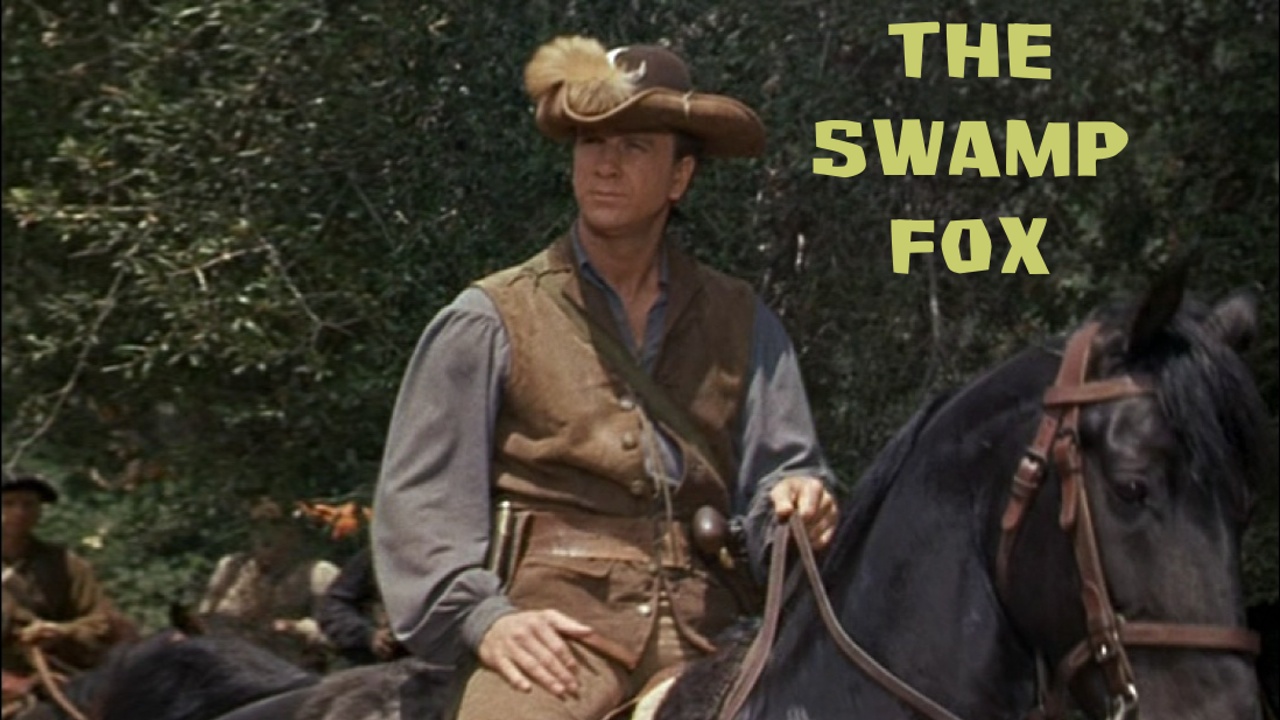
I go into detail about the series in my article: "Walt Disney Presents: 'The Saga of Andy Burnett', 'The Nine Lives of Elfego Baca', 'Texas John Slaughter', 'The Swamp Fox' and 'Daniel Boone" at:
http://www.bewaretheblog.com/2017/04/walt-disney-presents-mountain-men.html
Before Walt Disney introduced "Francis Marion". There was an epic, though a slow moving, motion picture on the life of:
JOHN PAUL JONES released June 16, 1959
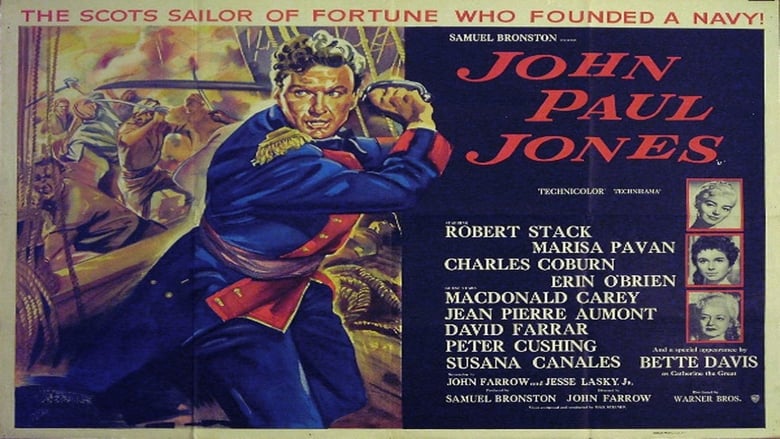
This big budget production came from Samuel Bronston. Who would released, in 1961, both "King of Kings" starring Jeffrey Hunter as "Jesus" and "El Cid" starring Charlton Heston and Sophia Loren. In 1963 it was "55 Days at Peking" starring Charlton Heston, David Niven and Ava Gardner and in 1964, "The Fall of the Roman Empire", starring Alec Guiness, Sophia Loren, Stephen Boyd and Christopher Plummer. Should my reader be interested in these films and the "U.S. Supreme Court" case against Bronston. My article SAMUEL BRONSTON Movies Featuring A Cast of Thousands" can be found at:
http://www.bewaretheblog.com/2016/04/samuel-bronston-movies-featuring-cast.html
The screenplay for "John Paul Jones" was based upon a story by Clement Ripley. The actual writing was in the good hands of Jessie Lasky, Jr., Alfred Hitchcock;s 1936 "Secret Agent", Cecil B. DeMille's 1938 "The Buccaneer", 1939 "Union Pacific", 1940 "Northwest Mounted Police", 1942's "Reap the Wild Wind", 1947's "Unconquered" and 1949's "Samson and Delilah".
Robert Stack was miscast as "John Paul Jones". At the time Stack had just started the television series "The Untouchables" as "Elliot Ness".
Peter Cushing had the small role of "British Naval Captain Richard Pearson" of the "HMS Serapis".
The screenplay covers the entire life of "John Paul Jones" and the "Revolutionary War" is a small part. Although that was used to build up the feature film for audiences with the battle between the "USS Bonhomme Richard" and "HMS Serapis" with the famous response:

Above Peter Cushing offers his sword to Robert Stack after the battle.
THE DEVIL'S DISCIPLE released August 20, 1959

The screenplay was based upon a George Bernard Shaw play from 1897.
Burt Lancaster portrayed fictional "Reverend Anthony Anderson". The previous year he co-starred with Clark Gable in the World War Two submarine story "Run Silent, Run Deep".
Above the perfectly underplayed and evil John Carradine.




The first biographical motion picture of one of the "Founding Fathers" and the subject of a current popular Broadway Musical was:
ALEXANDER HAMILTON released September 12, 1931

Back in 1917, the motion picture's sta,r George Arliss, wrote, produced and starred in the play of the same name the picture was based upon. The story follows Hamilton's efforts to pass the "Assumption Bill (Funding Act of 1790)" and his compromising to pass the "Residence Act". That second act was to establish a permanent seat of Government along the Potomac River.

Above Doris Kenyon as "Mrs. Betsy Hamilton" and George Arliss as "Alexander Hamilton".

Above George Arliss and Alan Mowbray as "General George Washington". Below Kenyon, Arliss and Montagu Love as "Thomas Jefferson".

THE HOWARDS OF VIRGINIA released September 19, 1940
This feature film starred Gary Grant as "Matt Howard" and Martha Scott as "Jane Peyton
Howard". The film was based upon the 1939 novel "Tree of Liberty" by Elizabeth Page and followed the "Peyton" and "Howard" families throughout the entire war.
Above Cary Grant as "Matt Howard", Sir Cedric Hardwicke as "Fleetwood Peyton" and Martha Scott as "Jane Peyton Howard". Below Grant speaking to Richard Carlson as "Thomas Jefferson".
During the months before "The Howards of Virginia" was released. American's started noticing more films like "Enemy Agent", April 19, 1940, about a man being framed by German spies and Alfred Hitchcock's "Foreign Correspondent", August 16, 1940, about an unnamed country's spies in London on the Eve of the Second World War.
Another type of movie starting to appear, with the blessings of President Franklin D. Roosevelt, were subtle hints at what the United States could do, if we entered the "Second World War" on the side of England. Two of these films were "I Wanted Wings", released March 31, 1941, about the Army Air Corps starring Ray Milland and William Holden. Then later that year was "Dive Bomber", starring Errol Flynn and Fred MacMurray. This strangely timely motion picture about the Navy Air Force and the aircraft carrier U.S.S. Enterprise was released on August 30, 1941.
After December 31, 1941, America's movie screens would be filled with John Wayne, Robert Taylor and even D.C.'s "Batman" fighting Germany, Italy and Japan. The "Revolutionary War" was truly a thing of the past and the war for American Independence wouldn't return until 1946, but only as a backstory.
THE TIME OF THEIR LIVES released August 16, 1946
Bud Abbott and Lou Costello start out in 1780 as Master Tinker "Horatio Prim", Lou, and devious Butler, "Cuthbert Greenway", Bud. "Horatio Prim" wants to marry "Nora O'Leary", played by Anne Gillis, and has a letter from "General Washington" that might help get her out of servitude from "Tom Dansbury", played by Jess Barker.
However, "Nora" overhears "Dansbury" discussing his part in "General Benedict Arnold's" plot against "George Washington". "Melody Allen", played by Marjorie Reynolds, is outside a window and overhears everything. "Dansbury's" butler, "Greenway", attempts to get the letter as he also wants to marry "Nora". "Dansbury", though, grabs it from "Nora" and puts the letter in a mantle clock. Continental troops, sent to arrest "Tom Dansbury", arrive, loot and set his house on fire. They mistakenly believe "Horatio" and "Melody" are traitors, shoot them, and toss their bodies into a well.
The film cuts to 166 years later and the ghosts of "Horatio" and "Melody" now haunt the restored house and have to find the letter to prove their innocence and enter heaven. One of their problems is "Dr. Ralph Greenway", Bud, and the ghost jokes begin.

Above Lou Costello and Anne Gillis and below Lou and Majorie Reynolds.


Above ghost Lou Costello, psychic Gail Sondergarrd and Bud Abbott as "Dr. Ralph Greenway".
When "The Time of Their Lives" was being released. Politically our World War Two ally the Soviet Union was back as our enemy. Between Senator Joseph McCarthy and the "House Committee on Un-American Activities". The American Motion Picture Industry, Producers, Directors, Actors, Writers and even certain crew members were being "Black Listed" as Communist Agents, or more commonly, sympathizers.
The future Nancy Reagan, Nancy Davis, was being pulled in front of the committee, because she had the same name as the actress they really wanted. The President of the Screen Actors Guild, Ronald Reagan, intervened on her behalf.
Many in the Industry refused to name name's and fled to England and that country's film industry. One such person, who was a Communist, was writer Guy Endore. Among Endore's work was the screenplay for Todd Browning's 1935 "Mark of the Vampire". His 1945, "The Story of G.I. Joe", was nominated for the Academy Award for "Best Original Screenplay". As a novelist, Guy Endore, wrote the definitive novel "The Werewolf of Paris". Which become "Hammer Films" 1961 "Curse of the Werewolf".A look at this period in America's Motion Picture history: "Guy Edore: Black Listing and Communism in the Motion Picture Industry" can be found at:
http://www.bewaretheblog.com/2015/12/guy-endore-communism-in-motion-picture.html
To avoid "Black Listing" and the attention of both McCarthy and the "House Committee". The major movie studios turned to "Safe" subject matter and by the start of the 1950's, Western's were back, Science Fiction films, Musicals and the occasional Religious epic were the norm. Enter the return of the "American Revolutionary War".
THE SCARLET COAT released July 29, 1955

This was a major budgeted motion picture for Metro-Goldwyn-Mayer in both the new process of CinemaScope an Metro-Color.
The film was directed by John Sturges. His "Bad Day at Black Rock" starring Spencer Tracy, Robert Ryan and Anne Francis had been released in January. Sturges would go on to direct 1957's "The Gunfight at the O.K. Corral", 1960's "The Magnificent Seven" and 1963's "The Great Escape" among other motion pictures.
The screenplay was by Karl Tunberg. Among his work was the Tyrone Power, Betty Grable, 1941 "A Yank in the R.A.F.", the Robert Taylor, Eleanor Parker, 1951, "Valley of the Kings" and would go on to be the only writer for director William Wyler's 1959's, "Ben Hur", starring Charlton Heston.
This picture's screenplay alleged to be the story of the founding of "The Secret Service" and the true story of the capture of "General Benedict Arnold" for treason.
Cornel Wilde portrayed "Major John Boulton". The fictional version of the real life "Benjamin Tallmadge". So much from being the "True Story". Wilde had just been in an episode of television's "I Love Lucy" and the film-noir "The Big Combo" with his wife Jean Wallace. The couple would follow this picture with another film-noir. Also in 1955 was "Storm Fear", but it is the overlooked 1963 "Sword of Lancelot". That Cornel Wilde directed with his wife as "Guinevere", Brian Ahern as "King Arthur" and himself as "Lancelot", that I highly recommend to my reader.
Michael Wilding portrayed real life "Major John Andre". Wilding had just been seen as "Prince Charles" opposite Leslie Caron, as "Ella", in 1955's "The Glass Slipper". He had been acting in British films since 1933 and in 1950 had co-starred with Jane Wyman, Marlene Dietrich, and Richard Todd in Alfred Hitchcock's overlooked "Stage Fright".
Above Cornel Wilde and Michael Wilding.
George Sanders portrayed the real life "Dr. Jonathan Odell". He had just been seen in director Fritz Lang's 1955 "Moonfleet" with Stewart Granger. He would follow this feature with 1955's "The King's Thief" with Ann Blyth and David Niven.

Above George Sanders with Cornel Wilde
Anne Francis portrayed the fictional "Sally Cameron". She had been acting since 1947 and 1955 was her breakthrough year. Besides this feature the actress was seen in "Bad Day at Black Rock", "Battle Cry", and with Glenn Ford and Sidney Poitier "Blackboard Jungle". Of course her most famous role would be "Altaria Morbus" in the 1956 Science Fiction classic "Forbidden Planet".
Above Wilde, Wilding and Anne Francis.
In typical Hollywood fashion, the audience learns that in 1780 "General Benedict Arnold", played by Robert Douglas, is now in command of the defenses at "West Point", New York. Assigned to American Counter Intelligence is "Major John Boulton". He intercepts a spy leaving a tavern, kills him, and removes a letter. The letter is taken to "General Robert Howe", played by John McIntire, and it contains a "Coded Message" from the known British Spy calling himself "Gustavus" to another "James Osborn" in care of "Dr. Odell".
Returning to the tavern the stable boy "Ben Potter", played by Bobby Driscoll, informs "Boulton" that "Mrs. Sally Cameron" is the wife of a Tory and is carrying, under a flag of truce, information to the enemy. So is set up this mixture of fact and fiction.

Above Bobby Driscoll the young boy in Walt Disney's controversial 1946 "Song of the South", "Jim Hawkins" in Disney's 1950 "Treasure Island" and the voice of the title character in Walt Disney's animated 1953 "Peter Pan".
The story tells the again partly fictional and party factual story of the capture of "Benedict Arnold" and the relationship between "Boulton (Tallmadge)" and the head of America's Secret Service, surprisingly, "British Major John Andre". It also tells of how "Andre" was discovered to be a British spy and hanged for assisting "Benedict Arnold's" attempted surrendering of West Point to the British Army.

WILLIAMSBURG: THE STORY OF A PATRIOT first shown on March 30, 1957
This is a 37 minute picture starring a pre-"Dr. No" and "Hawaii 5-0" Jack Lord as the fictional "John Fry". It was filmed at "Colonial Williamsburg" and tells the story about how "Fry" becomes a member of the "House of Burgess". Along with the history of Virginia up until the "Second Continental Congress". It is still playing today and is the longest continuously running movie in history.
Speaking of Walt Disney! There were two entries made by him.
JOHNNY TREMAINE released June 19, 1957
This was the movie that 10 years old Lloyd learned there was such a thing as the "American Revolution".

The screenplay was based upon the novel by Esther Forbes written in 1943. The screenplay was by Thomas W. Blackburn. For Walt Disney, Blackburn, had written both television mini-series, "Davy Crockett, King of the Wild Frontier" and "Davy Crockett and the River Pirates". In films he had written "Westward Ho the Wagons" that was released the year before "Johnny Tremain".
The feature was directed by Robert Stevenson. Two of his films prior to this were the 1937 version of H. Ridder Haggard's "King Solomon's Mines" with Cedric Hardwicke and Paul Robeson. The 1941 version of the Fannie Hurst novel "Back Street" starring Charles Boyer and Margaret Sullivan. Starting in 1952, Stevenson had been directing American television shows and this was his first motion picture since that year.
Hal Stalmaster portrayed Johnny Tremain". His acting career would only include six roles, before he started working in the Walt Disney Casting Department and became a Talent Agent.
Luana Patten portrayed "Priscilla Lapham". She started acting opposite Bobby Driscoll in Walt Disney's 1946 "Song of the South" and the two appeared in Disney's 1948 "So Dear to My Heart" starring Burl Ives. After this film Patten appeared mostly on television, but in 1960 was in the Robert Mitchum feature film "Home from the Hill".

Above Luana Patten and Hal Salmaster.
Jeff York portrayed the real life "James Otis". Although York started acting in 1937. He is probably best known for his Disney work that included playing "Mike Fink" in 1955's "Davy Crockett and the River Pirates". Along with "The Great Locomotive Chase" and "Westward Ho the Wagons" in 1956. He portrayed "Joe Crane" in the Disney mini-series "The Saga of Andy Burnett" and repeated the role three times on Walt Disney's "Zorro" starring Guy Williams.
My look at "Walt Disney's: 'Davy Crockett, King of the Wild Frontier" may be read at:
http://www.bewaretheblog.com/2016/06/walt-disneys-davy-crockett-king-of-wild_25.html
The story revolves around a young silver smith apprentice "Johnny Tremain". Who became a witness to the "Boston Tea Party" and the start of the American Revolution as a member of the "Sons of Liberty".



"Johnny Tremain" wasn't the only "Revolutionary War" drama Walt Disney made. On television came the story of real life "Francis Marion", Hollywood style, in the nine episode, spaced out between 1959 and 1961, the "Swamp Fox" on "The Magical World of Disney".
The first episode "The Swamp Fox: The Birth of the Swamp Fox" premiered on October 23, 1959.
Leslie Nielson portrayed "Colonel Francis Marion". Nielson had been acting since 1950, but only on television until co-starring with Glenn Ford and Donna Reed in 1956's "Ransom". Which was followed by co-starring with Walter Pidgeon and Anne Francis in the same years "Forbidden Planet". In 1957, Leslie Nielson co-starred with Debbie Reynolds in "Tammy and the Bachelor" and it was back to a feature with Glenn Ford in 1958's "The Sheepman". That co-starred Shirley MacLaine. After which it was back to television appearances.

I go into detail about the series in my article: "Walt Disney Presents: 'The Saga of Andy Burnett', 'The Nine Lives of Elfego Baca', 'Texas John Slaughter', 'The Swamp Fox' and 'Daniel Boone" at:
http://www.bewaretheblog.com/2017/04/walt-disney-presents-mountain-men.html
Before Walt Disney introduced "Francis Marion". There was an epic, though a slow moving, motion picture on the life of:
JOHN PAUL JONES released June 16, 1959

This big budget production came from Samuel Bronston. Who would released, in 1961, both "King of Kings" starring Jeffrey Hunter as "Jesus" and "El Cid" starring Charlton Heston and Sophia Loren. In 1963 it was "55 Days at Peking" starring Charlton Heston, David Niven and Ava Gardner and in 1964, "The Fall of the Roman Empire", starring Alec Guiness, Sophia Loren, Stephen Boyd and Christopher Plummer. Should my reader be interested in these films and the "U.S. Supreme Court" case against Bronston. My article SAMUEL BRONSTON Movies Featuring A Cast of Thousands" can be found at:
http://www.bewaretheblog.com/2016/04/samuel-bronston-movies-featuring-cast.html
The screenplay for "John Paul Jones" was based upon a story by Clement Ripley. The actual writing was in the good hands of Jessie Lasky, Jr., Alfred Hitchcock;s 1936 "Secret Agent", Cecil B. DeMille's 1938 "The Buccaneer", 1939 "Union Pacific", 1940 "Northwest Mounted Police", 1942's "Reap the Wild Wind", 1947's "Unconquered" and 1949's "Samson and Delilah".
Robert Stack was miscast as "John Paul Jones". At the time Stack had just started the television series "The Untouchables" as "Elliot Ness".
Peter Cushing had the small role of "British Naval Captain Richard Pearson" of the "HMS Serapis".
The screenplay covers the entire life of "John Paul Jones" and the "Revolutionary War" is a small part. Although that was used to build up the feature film for audiences with the battle between the "USS Bonhomme Richard" and "HMS Serapis" with the famous response:
SIR, I HAVE NOT YET BEGUN TO FIGHT!

Above Peter Cushing offers his sword to Robert Stack after the battle.
THE DEVIL'S DISCIPLE released August 20, 1959

The screenplay was based upon a George Bernard Shaw play from 1897.
Burt Lancaster portrayed fictional "Reverend Anthony Anderson". The previous year he co-starred with Clark Gable in the World War Two submarine story "Run Silent, Run Deep".
Kirk Douglas portrayed "Richard Dudgeon". Just before this film he was in director John Sturges' "Last Train from Gun Hill". Trivia for a quick eyed viewer. In 1959's "Operation Petticoat" starring Cary Grant and Tony Curtis. Look at the seaman welding on the dock.

Sir Laurence Olivier portrayed the only real person in the movie, "British General Burgoyne". The following year Olivier would co-star with Kirk Douglas in Stanley Kubrick's "Spartacus" produced by Douglas.

Janette Scott portrayed "Judith Anderson". Scott had been appearing mainly on British television with an occasional movie. In 1963 she appeared in a motion picture version of the John Wyndham novel "Day of the Triffids". For that motion picture Janette Scott would be immortalized in a Richard O'Brien song from his "The Rocky Horror Show" and became a British Scream Queen
with 1963's "Paranoiac".

Sir Laurence Olivier portrayed the only real person in the movie, "British General Burgoyne". The following year Olivier would co-star with Kirk Douglas in Stanley Kubrick's "Spartacus" produced by Douglas.

Janette Scott portrayed "Judith Anderson". Scott had been appearing mainly on British television with an occasional movie. In 1963 she appeared in a motion picture version of the John Wyndham novel "Day of the Triffids". For that motion picture Janette Scott would be immortalized in a Richard O'Brien song from his "The Rocky Horror Show" and became a British Scream Queen
with 1963's "Paranoiac".
The picture has the rogue "Richard Dudgeon" team up with "Reverend Anderson" to teach "General Burgoyne" proper respect for the New Hampshire colonists. All in typical Bernard Shaw's use of the English language and his created situations. It is a comedy.
There wasn't an American motion picture about the Revolutionary War during the 1960's. However, there was an Italian-French co-production.
LA FAYETTE released February 8, 1961 in France, April 10, 1963 in the United States

The picture had an International cast of 36 speaking roles. These included Jack Hawkins as "British General Cornwallis", Orson Welles as "Benjamin Franklin", Wolfgang Preiss as "Baron Kolb", Vittorio De Sica as "Bancroft". French actor Michel Le Royer portrayed "La Fayette".
The screenplay tells how French Officer "La Fayette" offers his services to "General George Washington", played by Howard St. John, and his role in the Revolutionary War with a little sex thrown in.


The United States returned to the screen with a film version of a popular 1969 Broadway musical play with:
1776 released November 17, 1972
The plot of the musical is the debates that happened in the "Continental College" to write the "Declaration of Independence".
Based upon the above poster the main cast were:
William Daniels portraying "John Adams (MA)". Daniels would be known for the television series "St. Elsewhere" as "Dr. Mark Craig".
Howard Da Silva portrayed "Dr. Benjamin Franklin (PA)". Da Silva was known for portraying gangsters and criminals in the 1930's and 1940's, but was "Black Listed" in the 1950's.
Ken Howard portrayed "Thomas Jefferson (VA)". Howard is mostly associated with television and starred as "The White Shadow" for 58 episodes between 1978 through 1981.
Donald Madden portrayed "John Dickinson (PA)".
In fact the musical recreation about the creation of the "Declaration of Independence" has a singing actor as every representative that was present as "Thomas Jefferson" formulated the document.


INDEPENDENCE first shown on July 4, 1976
This was a short, 30 minute, docudrama, requested by the "National Parks Service" for the "Bi-Centennial" of the United States of America. The 30 minutes cover the events between 1774 and 1800 at Philadelphia, Pennsylvania.
However, the film was directed by John Huston, 1941's "The Maltese Falcon", 1948's "The Treasure of the Sierra Madre", both 1951's "The African Queen" and Stephen Crane's "The Red Badge of Courage".
Part of Houston's cast included:
Eli Wallach as "Benjamin Franklin", Ken Howard, not singing this time, as "Thomas Jefferson", Patrick O'Neal as "George Washington", Pat Hingle as "John Adams" and
E.G. Marshall was the "Narrator".

THE REBELS a two-part television mini-series was available in syndication on May 13, 1979

The series was based upon a group of novels by best selling author John Jakes.

Above left to right are Harry Johnson as "Peter Jennings", Don Johnson as "Judson Fletcher", Warren Stevens as "Ambrose Waverly" and William Smith as "John Waverly".
The story has John Jake's fictional characters involved with the "American Revolution". The lead was actor Andrew Stevens as "Philip Kent" seen below.

The usual suspects appeared such as Tom Bosley portraying "Benjamin Franklin", Jim Backus as "John Hancock", and Peter Graves as "George Washington".
REVOLUTION released December 25, 1985

In 1965 James Stewart played a Southern Farmer, in the motion picture "Shenandoah", looking for his 16 years old son captured by the Union Army during the "American Civil War", because he had been wearing a Confederate cap he found in the dirt. I
While in this motion picture, Al Pacino, is a fur trapper looking for his captured son by the British, because he wanted to be a drummer with the "Continental Army". Same basic plot, but different war. "Shenandoah" was a box office hit and "Revolution" a box office disaster.


During the decade of the 1990's there appears to have been no interest in making either a motion picture, or television programs about the American Revolutionary War.
THE CROSSING a television movie shown January 10, 2000 on the A & E network.
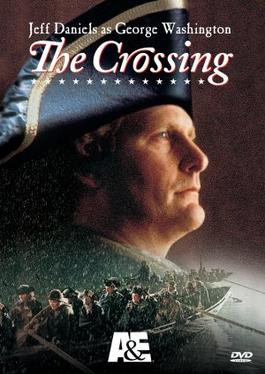
This was a recreation of "General Washington", played by Jeff Daniel, crossing the Delaware River to attack the Hessian's at Trenton. The film was based upon the Howard Fast novel of that name.

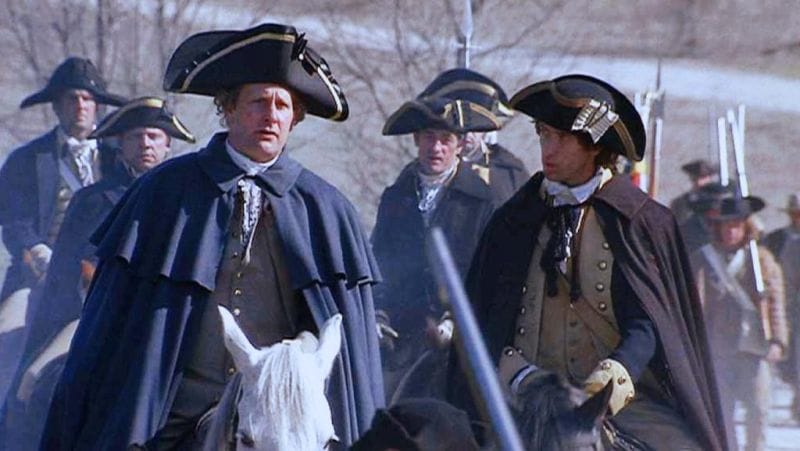-screenshot.jpg)
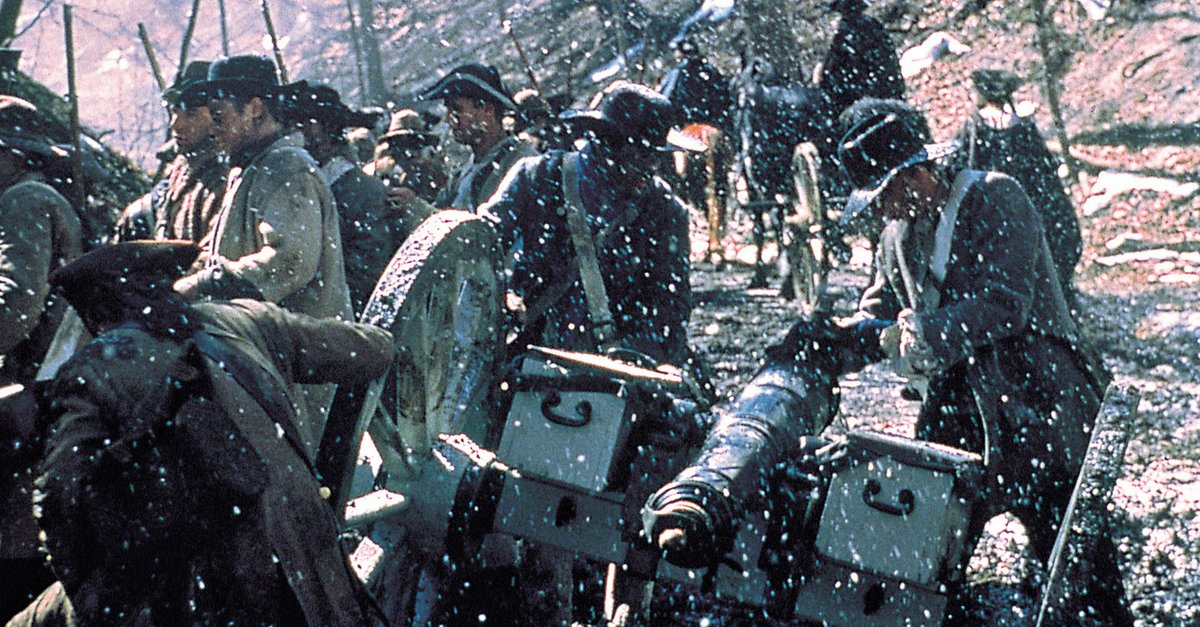

THE PATRIOT released June 28, 2000

The feature was directed by Roland Emmerich, 1994's "Stargate", 1996's "Independence Day", and 1998's "Godzilla". The feature was produced by Emmerich's partner Dean Devlin the same three films.
Critic Roger Ebert on June 28, 2000 stated:


"Martin" is a widower with 13 children and does not want to fight. Although two of his sons join the Army.

When his son "Thomas", played by Gregory Smith, center above, is killed. "Benjamin Martin" joins and becomes the rebel leader known as "The Ghost", an obvious variation on "Francis Marion".

Above Heath Ledger as "Gabriel Martin".

There was a lawsuit against the picture that "Sony Pictures" was forced to pay. They had created fake positive reviews for ""The Patriot" by non-existent critics supposedly with real newspapers.
JOHN ADAMS a seven-part HBO mini-series started on March 16, 2008
The screenplay was based upon historian David McCullough's Pulitzer Prize-Winning Book and came from Executive Producer Tom Hanks.
The first three-parts deal with "John Adams" prior to and during the Revolutionary War. The fourth starts out with Vice President Adams being informed the war is over and goes forward with his life.

Above Paul Giamattti as "John Adams". Below he is with Laura Linney as his wife "Abigal".

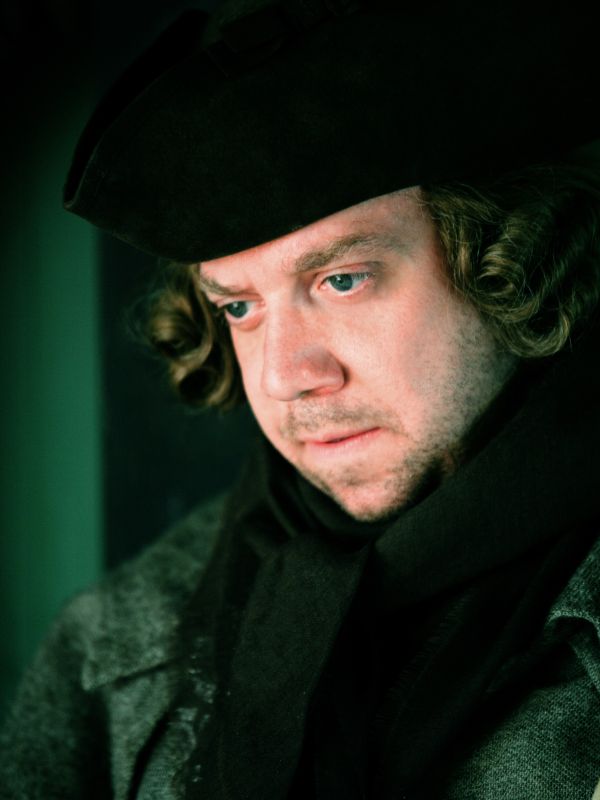
SONS OF LIBERTY is a three-part mini-series that premiered January 25, 2015 on the History Channel
It deals with the years 1765 through 1776 in Boston, Massachusetts. It might be described as an adult "Johnny Tremain". The 13 main characters are all real people and include Ben Barnes as "Samuel 'Sam' Adams", Marton Csokas as "General Thomas Gage", Michael Raymond-James as "Paul Revere", Rafe Spall as "John Hancock", Henry Thomas as "John Adams", Jason O'Mara as "George Washington" and Dean Norris as "Benjamin Franklin".

Unlike every other picture I have mentioned. The 2015 "Sons of Liberty" has British actor Jimmy Akingbola as "Peter Salem". "Salem", an African Moor, arrived in the Colonies as a slave. He lived in Framingham, Massachusetts and became a free man just before the "Revolutionary War" began. "Peter Salem" enlisted and spent five years as a soldier in the Continental Army fighting for American Independence. He took part in the first battle at Concord and was on "Bunker Hill". After which, "Peter Salem", joined "John Nixon's 6th Massachusetts Regiment".

Above Jimmy Akingbola as "Peter Salem", the real "Salem" who became a successful cane weaver.


WASHINGTON is a three-part mini-series that premiered February 16, 2020 on the History Channel
Nicholas Rowe portrays "George Washington". This is a very detailed, somewhat unflattering, life of the First President of the United States and is not typical "Hollywood".
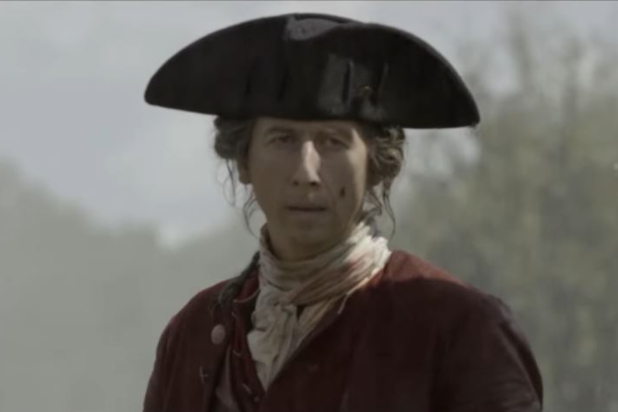
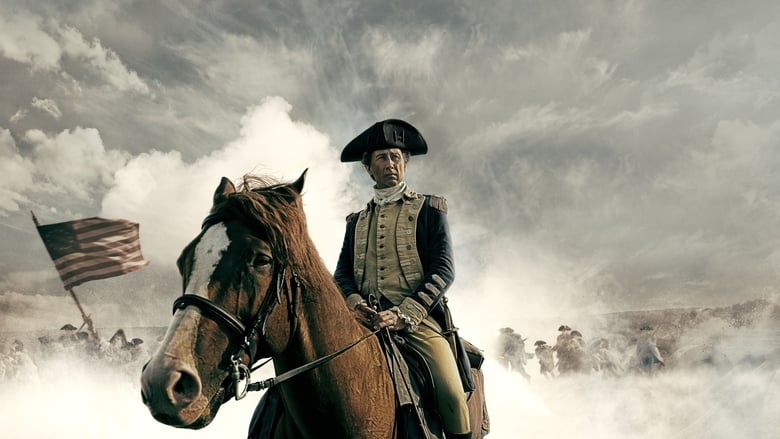
Above Nicholas Rowe as "General Washington" in an almost 3-D looking still from the mini-series. My reader can almost see the real "Washington" leading the ragtag Continental Army.
There wasn't an American motion picture about the Revolutionary War during the 1960's. However, there was an Italian-French co-production.
LA FAYETTE released February 8, 1961 in France, April 10, 1963 in the United States

The picture had an International cast of 36 speaking roles. These included Jack Hawkins as "British General Cornwallis", Orson Welles as "Benjamin Franklin", Wolfgang Preiss as "Baron Kolb", Vittorio De Sica as "Bancroft". French actor Michel Le Royer portrayed "La Fayette".
The screenplay tells how French Officer "La Fayette" offers his services to "General George Washington", played by Howard St. John, and his role in the Revolutionary War with a little sex thrown in.


The United States returned to the screen with a film version of a popular 1969 Broadway musical play with:
1776 released November 17, 1972
The plot of the musical is the debates that happened in the "Continental College" to write the "Declaration of Independence".
Based upon the above poster the main cast were:
William Daniels portraying "John Adams (MA)". Daniels would be known for the television series "St. Elsewhere" as "Dr. Mark Craig".
Howard Da Silva portrayed "Dr. Benjamin Franklin (PA)". Da Silva was known for portraying gangsters and criminals in the 1930's and 1940's, but was "Black Listed" in the 1950's.
Ken Howard portrayed "Thomas Jefferson (VA)". Howard is mostly associated with television and starred as "The White Shadow" for 58 episodes between 1978 through 1981.
Donald Madden portrayed "John Dickinson (PA)".
In fact the musical recreation about the creation of the "Declaration of Independence" has a singing actor as every representative that was present as "Thomas Jefferson" formulated the document.
INDEPENDENCE first shown on July 4, 1976
This was a short, 30 minute, docudrama, requested by the "National Parks Service" for the "Bi-Centennial" of the United States of America. The 30 minutes cover the events between 1774 and 1800 at Philadelphia, Pennsylvania.
However, the film was directed by John Huston, 1941's "The Maltese Falcon", 1948's "The Treasure of the Sierra Madre", both 1951's "The African Queen" and Stephen Crane's "The Red Badge of Courage".
Part of Houston's cast included:
Eli Wallach as "Benjamin Franklin", Ken Howard, not singing this time, as "Thomas Jefferson", Patrick O'Neal as "George Washington", Pat Hingle as "John Adams" and
E.G. Marshall was the "Narrator".

THE REBELS a two-part television mini-series was available in syndication on May 13, 1979

The series was based upon a group of novels by best selling author John Jakes.

Above left to right are Harry Johnson as "Peter Jennings", Don Johnson as "Judson Fletcher", Warren Stevens as "Ambrose Waverly" and William Smith as "John Waverly".
The story has John Jake's fictional characters involved with the "American Revolution". The lead was actor Andrew Stevens as "Philip Kent" seen below.
The usual suspects appeared such as Tom Bosley portraying "Benjamin Franklin", Jim Backus as "John Hancock", and Peter Graves as "George Washington".
REVOLUTION released December 25, 1985

In 1965 James Stewart played a Southern Farmer, in the motion picture "Shenandoah", looking for his 16 years old son captured by the Union Army during the "American Civil War", because he had been wearing a Confederate cap he found in the dirt. I
While in this motion picture, Al Pacino, is a fur trapper looking for his captured son by the British, because he wanted to be a drummer with the "Continental Army". Same basic plot, but different war. "Shenandoah" was a box office hit and "Revolution" a box office disaster.
During the decade of the 1990's there appears to have been no interest in making either a motion picture, or television programs about the American Revolutionary War.
THE CROSSING a television movie shown January 10, 2000 on the A & E network.

This was a recreation of "General Washington", played by Jeff Daniel, crossing the Delaware River to attack the Hessian's at Trenton. The film was based upon the Howard Fast novel of that name.

-screenshot.jpg)


THE PATRIOT released June 28, 2000

The feature was directed by Roland Emmerich, 1994's "Stargate", 1996's "Independence Day", and 1998's "Godzilla". The feature was produced by Emmerich's partner Dean Devlin the same three films.
Critic Roger Ebert on June 28, 2000 stated:
None of it has much to do with the historically reality of the Revolutionary War.According to the writer Robert Rodat. His fictional hero of the French and Indian War "Captain/Colonel Benjamin Martin", portrayed by Mel Gibson, was a combination of four real life persons. The first was Andrew Pickens, who fought in the "Anglo-Cherokee" war and became a Brigadier General in the South Carolina militia. Francis Marion, aka: "The Swamp Fox", who also served in the "French and Indian War" and became a Brigadier General in the South Carolina militia . Daniel Morgan, a member of the Virginia militia and who served with Brigadier General Benedict Arnold, before the "Revolutionary War" and was a Cousin of Daniel Boone. The fourth person Robert Rodat used to create his "Colonel Martin" was Thomas Sumter. Who was a soldier in the Virginia militia and became another Brigadier General in the South Carolina militia. Rodat added there might have been a few other real persons thrown into the mix. This information comes from the "Special Features" section on the DVD release.

"Martin" is a widower with 13 children and does not want to fight. Although two of his sons join the Army.

When his son "Thomas", played by Gregory Smith, center above, is killed. "Benjamin Martin" joins and becomes the rebel leader known as "The Ghost", an obvious variation on "Francis Marion".
Above Heath Ledger as "Gabriel Martin".
There was a lawsuit against the picture that "Sony Pictures" was forced to pay. They had created fake positive reviews for ""The Patriot" by non-existent critics supposedly with real newspapers.
JOHN ADAMS a seven-part HBO mini-series started on March 16, 2008
The screenplay was based upon historian David McCullough's Pulitzer Prize-Winning Book and came from Executive Producer Tom Hanks.
The first three-parts deal with "John Adams" prior to and during the Revolutionary War. The fourth starts out with Vice President Adams being informed the war is over and goes forward with his life.

Above Paul Giamattti as "John Adams". Below he is with Laura Linney as his wife "Abigal".


SONS OF LIBERTY is a three-part mini-series that premiered January 25, 2015 on the History Channel
It deals with the years 1765 through 1776 in Boston, Massachusetts. It might be described as an adult "Johnny Tremain". The 13 main characters are all real people and include Ben Barnes as "Samuel 'Sam' Adams", Marton Csokas as "General Thomas Gage", Michael Raymond-James as "Paul Revere", Rafe Spall as "John Hancock", Henry Thomas as "John Adams", Jason O'Mara as "George Washington" and Dean Norris as "Benjamin Franklin".
Unlike every other picture I have mentioned. The 2015 "Sons of Liberty" has British actor Jimmy Akingbola as "Peter Salem". "Salem", an African Moor, arrived in the Colonies as a slave. He lived in Framingham, Massachusetts and became a free man just before the "Revolutionary War" began. "Peter Salem" enlisted and spent five years as a soldier in the Continental Army fighting for American Independence. He took part in the first battle at Concord and was on "Bunker Hill". After which, "Peter Salem", joined "John Nixon's 6th Massachusetts Regiment".

Above Jimmy Akingbola as "Peter Salem", the real "Salem" who became a successful cane weaver.
WASHINGTON is a three-part mini-series that premiered February 16, 2020 on the History Channel
Nicholas Rowe portrays "George Washington". This is a very detailed, somewhat unflattering, life of the First President of the United States and is not typical "Hollywood".


Above Nicholas Rowe as "General Washington" in an almost 3-D looking still from the mini-series. My reader can almost see the real "Washington" leading the ragtag Continental Army.





No comments:
Post a Comment